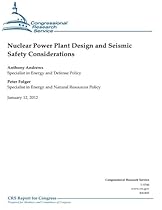Nuclear Power Plant Design and Seismic Safety Considerations

| Author | : | |
| Rating | : | 4.55 (596 Votes) |
| Asin | : | 1478110953 |
| Format Type | : | paperback |
| Number of Pages | : | 42 Pages |
| Publish Date | : | 2017-12-23 |
| Language | : | English |
DESCRIPTION:
Operators actions not supported This article is actually superficial. It does not provide sufficient information on the evolution of the Fukushima accident and the actions of the operators of the plant to minimize the action of the effects of the accident to the environment. Importantly, the degree of difficulty to
nuclear power plants designed in the 1960s and 1970s used a deterministic statistical approach to addressing the risk of damage from shaking caused by a large earthquake (termed Deterministic Seismic Hazard Analysis, or DSHA). In late March 2011, NRC announced that it had identified 27 nuclear reactors operating in the CEUS that would receive priority earthquake safety reviews.. USGS notes that the 2008 hazard maps differ significantly from the 2002 maps in many parts of the United States, and generally show 10%-15% reductions in spectral and peak ground acceleration across much of the Central and Eastern United States (CEUS), and about 10% reductions for spectral and peak horizontal ground acceleration in the Western United States (WUS). utilities currently operate 104 nuclear power reactors at 65 sites in 31 states; 69 are PWR designs and the 35 are BWR designs. PSHA estimates the likelihood that various levels of ground motion will be exceeded at a given location in a given future time period. New nuclear plant designs will apply PSHA. In 2010, the NRC examined the implications of the updated NSHM for nuclear power plants operating in the CEUS, and concluded that NSHM data suggest that the probability for earthquake ground motions may be above the seismic design basis for some nu
